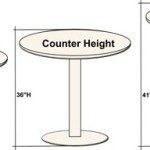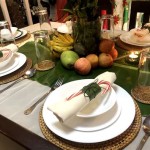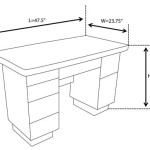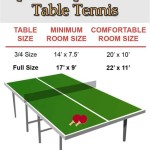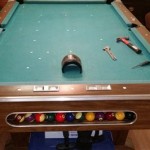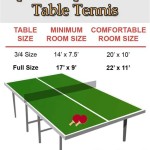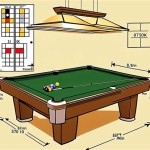Standard Size Of Coffee Table Book
Coffee table books have become a staple in interior design, serving as both decorative objects and sources of information and entertainment. Their relatively large format distinguishes them from typical books and contributes to their visual impact. However, the term "coffee table book" encompasses a considerable range of sizes, making it difficult to pinpoint a single, definitive standard. This article will explore the common dimensions associated with coffee table books, the factors that influence their size, and how these dimensions impact their purpose and presentation.
The appeal of a coffee table book lies not only in its content but also in its physical presence. These books are intended to be seen and handled, often prompting conversation and acting as visual cues to the owner's interests and passions. Consequently, publishers carefully consider the size and weight of these books to maximize their aesthetic and functional value. While a true "standard" size may not exist, certain dimensions are more prevalent and generally understood to be within the coffee table book category.
Common Dimensions of Coffee Table Books
While there is no legally defined standard size, coffee table books typically fall within a range of dimensions that distinguish them from smaller books and magazines. Understanding this range is crucial for both publishers and consumers when selecting or designing these visually driven publications.
Generally, coffee table books are larger than standard hardcover books. While a typical hardcover might measure around 6 inches by 9 inches, coffee table books often start at around 9 inches by 12 inches. This increased size allows for larger images, more expansive layouts, and a generally more impressive presentation. However, the upper limits are less strictly defined.
A frequently encountered size for coffee table books is 10 inches by 13 inches. This offers a substantial page size for showcasing photography, artwork, or intricate designs. Books of this size can comfortably accommodate large images without compromising detail, making them ideal for subjects such as landscape photography, architectural design, and fine art.
Another common dimension is 12 inches by 12 inches, a square format often used for photography books, particularly those featuring portraits or abstract art. The square shape provides a balanced and visually appealing layout, allowing images to stand alone or be arranged in dynamic compositions. Furthermore, this format echoes the size of vinyl record albums, lending a nostalgic association for some readers.
Finally, some coffee table books push the boundaries of size, reaching dimensions of 13 inches by 15 inches or even larger. These oversized books are often reserved for special editions or particularly ambitious projects that demand a grand presentation. They are typically more expensive and require more substantial coffee tables to support their weight and size.
It is important to note that these are general guidelines. Publishers often deviate from these dimensions based on the specific content, design, and target audience of the book. Smaller coffee table books, sometimes referred to as "mini" or "pocket" coffee table books, also exist, offering a more accessible and affordable option for readers with limited space or budget.
Factors Influencing Coffee Table Book Size
The size of a coffee table book is not arbitrary. Several factors influence the decision-making process undertaken by publishers when determining the optimal dimensions for a particular title. These considerations range from practical concerns related to printing and distribution to aesthetic choices designed to enhance the book's visual appeal and overall impact.
The content of the book is a primary driver of its size. A book featuring primarily large-format photography, for example, will likely necessitate a larger page size to showcase the images in sufficient detail and impact. Conversely, a book with more text and fewer visuals might be able to utilize a smaller format without sacrificing readability or aesthetic appeal. The complexity of the layout is also a factor. Books with intricate designs, fold-out pages, or interactive elements often require larger dimensions to accommodate these features.
Printing and binding capabilities also play a significant role. The size of the printing press and the limitations of binding techniques can restrict the dimensions of a book. Larger books often require specialized printing equipment and more complex binding processes, which can increase production costs. Publishers must weigh these costs against the desired size and aesthetic appeal of the book.
Distribution and storage are practical considerations that influence the size of coffee table books. Larger books are more difficult and expensive to ship and store, both for publishers and consumers. Retailers may also have limited shelf space, which can restrict the number of oversized books they can carry. These factors can influence publishers to opt for slightly smaller dimensions to improve distribution efficiency and reduce storage costs.
Finally, aesthetic considerations are paramount in determining the size of a coffee table book. Publishers carefully consider how the dimensions of the book will contribute to its overall visual impact and appeal. A larger book commands more attention and can create a more dramatic presentation, while a smaller book may feel more intimate and accessible. The choice of size is often driven by the desire to create a specific mood or convey a particular message to the reader.
Impact of Size on Purpose and Presentation
The size of a coffee table book directly impacts its purpose and presentation, influencing how it is perceived and used by its audience. The dimensions of the book affect its visual impact, its portability, and its ability to fulfill its intended function, whether it is to inform, entertain, or simply serve as a decorative object.
A larger coffee table book naturally commands more attention. Its imposing size makes it a focal point in any room, drawing the eye and inviting closer inspection. This makes larger books ideal for showcasing visually stunning content, such as fine art, landscape photography, or architectural designs. They are often used to make a statement about the owner's taste and interests, reflecting a discerning eye and an appreciation for beauty.
Smaller coffee table books, on the other hand, offer a more intimate and approachable experience. Their compact size makes them easier to handle and browse, encouraging casual exploration. These books are often preferred for subjects that require closer attention to detail, such as botanical illustrations, historical documents, or personal memoirs. They can also be more portable, making them suitable for travel or for sharing with others.
The size of a coffee table book also affects its suitability for different settings. Larger books are typically best suited for spacious living rooms or libraries, where they can be displayed prominently on a large coffee table or bookshelf. Smaller books can be more easily accommodated in smaller spaces, such as apartments or bedrooms, where space is at a premium. The choice of size should be guided by the intended setting and the overall aesthetic of the room.
Ultimately, the size of a coffee table book is a crucial factor in determining its effectiveness as both a source of information and a decorative object. By carefully considering the content, design, and target audience of the book, publishers can select the optimal dimensions to maximize its impact and ensure that it fulfills its intended purpose. Consumers, in turn, can choose books that best suit their tastes, their needs, and their living spaces, creating a collection that reflects their personal style and enriches their lives.

Coffee Table Book Printing

Perfect Coffee Table Book

20240703 Julyblogs V1 Trims Gif

Book Bound Hard Cover Professional Coffee Table Photo With Frosted Plastic Case Asabook

Design A Coffee Table Book Made Simple

Design A Coffee Table Book Art Printnia Com
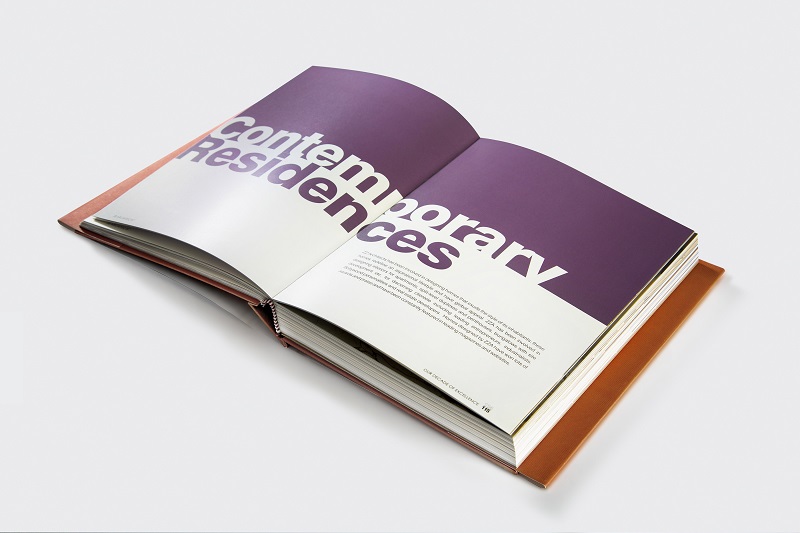
Oh How To Make A Coffee Table Book And Publish It Design Studio

Coffee Table Book Printing

Book Sizes And Why They Matter Preflight Books

Oh How To Make A Coffee Table Book And Publish It Design Studio
Related Posts

